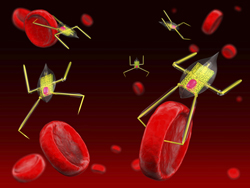Novel manufacture of microelectromechanical systems
Nanowires, nanotubes and the microelectromechanical systems (MEMS) that employ them form the basis of many exciting new or envisioned devices. Template-assisted electrodeposition is emerging as an important technique to form metallic nanomaterials of specific shapes and sizes. Low-cost template-assisted electrodeposition of metal alloys in the form of nanocrystalline films has great potential for improving their manufacture. EU-funded scientists carried out an intensive experimental campaign within the context of the project 'Template-assisted deposition of functional materials and devices' (TEMADEP) to derive process parameters. They studied the relationship between structure and properties of tungsten and molybdenum alloys and assessed possible applications. The focus was on metals and alloys particularly suitable for use in MEMS. Such applications require high mechanical strength, wear resistance, thermal resistance and resistance to deformation. Processing of nanowires and various multi-layer structures was optimised to form the basis for electroforming of MEMS with a view to production of microbumps. Microbumps are small 3D structures under laboratory investigation for assisting in 3D stacking of electronic chips, increasing device interconnects in a very small area package. The team also exploited template-assisted electrodeposition of materials on electrodes for sensor applications. Scientists characterised the properties of the most promising alloys. Aside from scientific goals, TEMADEP sought to strengthen ties between the EU Member States Belgium, France and Lithuania and the third countries Moldova and the United States. As a result of the fruitful collaboration, the project published numerous scientific papers and spawned nine more joint project proposals by project partners. TEMADEP demonstrated the use of template-assisted electrodeposition of tungsten and molybdenum alloys to form nanowires and nanotubes for MEMS and microbumps. Characterisation of process parameters and materials' properties should help spur EU industry toward future implementation.







